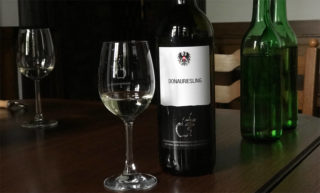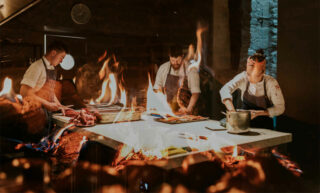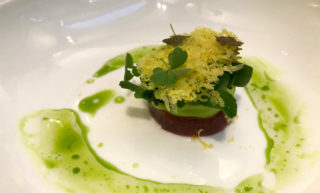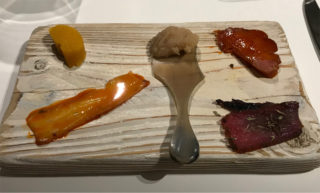Why Is Switzerland Opting Out?
One of the biggest trends in wine over the past two decades has been an increased interest in expressing origin. Organizations like the Verband Deutscher Prädikatsweingüter (VDP) in Germany and the Österreichische Traditionsweingüter (ÖTW) in Austria have both shaped and surfed this wave to the extent that their vineyard classifications — in both cases private initiatives — are now being codified into national law. Switzerland has no comparable organization. The one that comes closest, Mémoire des Vins Suisses, was founded more than 30 years ago, with the aim of proving that Swiss wines can age. Does this mean Swiss wines aren’t terroir driven?
The closest Switzerland probably ever got to a vineyard classification happened 15 years ago. Olivier Viret, a veteran of Agroscope, Switzerland’s federal center for agricultural research, led an extensive project that aimed to catalog all the vineyard sites, including their pedological and climatic characteristics. It was meant to be the foundation for a classification.
But the sheer endless number of soil types, the huge range of elevations (from roughly 200 m.a.s.l. near Ascona in Ticino to 1150 m.a.s.l. in Visperterminen in Wallis) and the large variety of mesoclimates, all packed into barely 15,000 hectares of vineyards, was too complex. Despite the efforts – 300 vineyards were scrutinized – the project never bore the fruit of a classification.
“Swiss winemaking is fundamentally origin-driven,” says Pierre Schauenberg of the Swiss Ministry of Agriculture, who is an expert in this field. To understand his claim, it is helpful to understand Switzerland’s legal framework, which gives Swiss cantons the freedom to shape their viti- and viniculture.
Understanding Swiss Wine Law
Switzerland’s Weinverordnung (Federal Wine Ordinance) is set up like a pyramid. At the base is Tafelwein, for which the grapes have to be grown in Switzerland, akin to Vin de France.
The second tier is Landwein. This category, comparable to the IGP designation, consists of wines from a region larger than a canton, but smaller than Switzerland as a whole, for example Westschweiz or Ostschweiz. A minimum of 85 percent of the grapes has to originate from the region mentioned on the label. Landweine mit eigener traditioneller Bezeichnung come from a single canton and have a traditional varietal designation like Fendant or Johannisberg du Valais.
At the top of the pyramid are wines of kontrollierte Ursprungsbezeichnung (KUB or AOC): controlled or designated origin. Each canton has its own appellation. With but one exception, the boundaries are strictly political and fully overlap with those of the cantons.
In a country like Austria, the top of the pyramid (the appellation or DAC) forms a pyramid of its own, with Gutsweine (estate wines) at the lowest level, followed by Ortsweine (village wines) and, at the top, the Erste and Grosse Lagen. No such structure exists in Switzerland. To understand how Lagenklassifikation and terms like grand cru or Grosse Lage are used here, the cantons of Vaud and Valais furnish useful examples.
Vineyards at Visperterminen, Wallis/Valais
Case Study Vaud: Vineyards as Brands
In most cantons, there are no further denominations. However, within the AOC Vaud, eight regions have their own AOCs. Moreover, there are 23 so-called lieux de production, similar to villages in France or Germany. They show some local character, but, according to Olivier Viret, who is currently responsibile for viticulture in the canton of Vaud, they are brands more than expressions of terroir.
Vaud counts two grand crus, Dézaley (54 hectares) and Calamin (16 hectares). Situated on the northeastern shore of Genfersee (Lake Geneva), viticulture started here in the 12th century, when Cistercian and Benedictine monks were granted land by the church. Arguably, these two appellations are the most terroir-driven designations in the country. Legally, they are regular appellations that have been granted grand cru status by the canton.
However, the grand cru designation in Vaud can also be used in association with the mention of the name of the lieux de production or the name of the commune for wine from the eight AOCs, with some additional specifications. Unsurprisingly, the use of the term grand cru has been hugely inflated, leading to the current overhaul of the cantonal wine ordinance. To encourage innovation and sustainability, AOC Vaud will relax its rules, giving wineries more opportunities to experiment. Grand cru status, however, will see greater regulation, among other things through the introduction of a tasting panel, also for the Dézaley and Calamin grands crus.
Case Study Valais: What Makes a Grand Cru?
The cantonal appellation of Valais, established in 1990, allows for 55 different grape varieties divided into three groups: indigenous, traditional, and international. The cantonal wine ordinance describes a grand cru as a higher quality wine that emphasizes the typicity of the delimited terroir and the characteristics of 15 indigenous and traditional Valais grape varieties.
With two to four permitted varieties per grand cru, the number is much smaller than for AOC wines. Yields are restricted, compliance with strict environmental requirements is obligatory, vines need to be at least eight years old, chaptalization is not permitted, and the grapes must be vinified within Valais. A tasting panel is part of the recognition.
The main difference from, say, Burgundian, German, or Austrian models is that grand cru wines in Valais must be labeled with the name of the village, keeping the identity of the vineyard shrouded. If a village has more than one grand cru, the situation becomes even murkier.
Fendant, a Swiss wine ©Bart de Vries
The Swiss Define Greatness Differently
In Switzerland, the term grand cru is not necessarily a recognition of a site’s special qualities. “At the federal level, a term like grand cru (or Grosse Lage) is undefined, implicitly leaving it to the cantons to decide how to use it. If they fail to do so, as in, for instance, the area of Basel-Landschaft, Basel-Stadt, and Solothurn, it cannot be used,” Schauenberg explains. Loopholes nevertheless exist.
Weingut Jauslin, just outside Basel, labels its two top wines as grand crus: Sauvignon Blanc derives its status from higher sugar levels and maturation in 350-liter barrels, Pinot Noir from the use of new oak barriques and barrel selection. This interpretation of the term is seen quite often in Switzerland.
The vineyard plays, at best, a secondary role. Provided that a vineyard name is registered and as long as 100 percent of the grapes are sourced from the mentioned vineyard, the name can be included on a wine label.
Given cantonal autonomy, generalizing is difficult. Broadly, Switzerland, especially the German-speaking cantons of Deutschschweiz, sticks to a system in which grape variety and sugar ripeness play a dominant role. To make a single-vineyard wine is a winegrower’s decision. Whether a wine represents value is decided by the market.
Will Switzerland ever get a vineyard classification?
There are two main reasons Switzerland is going its own way. “The first is political,” Oliver Viret explains. Switzerland is a confederation consisting of 26 cantons with a high level of autonomy, also with regards to winemaking.” Patrick Adank of Weingut Hansruedi Adank in Graubünden puts it another way: “The wine law is liberal.”
The vineyard area per canton is generally small, and each canton wants to distinguish itself, usually through grape variety. Vaud is associated with Chasselas, Neuchâtel with Pinot Noir, and so on.
This is where branding enters the conversation. The names of the cantons are also brand names for the winemaker. Vin du Valais AOC, Graubünden AOC Wein, and Vin AOC Vaud have become important labels for communicating wine type and quality to the consumer.
The sense of autonomy trickles down to the level of the individual vintner. Swiss winemakers are more used to thinking in terms of brand creation. “Donatsch is a good example,” Viret says, but the list can easily be extended. Internationally, Gantenbein, Chappaz, Adank, and Germanier are familiar names. Domestically, the list is much longer.
In an earlier conversation with Adank, the word branding popped up as well. He mentioned that exporting a small percentage of his bottles, while not necessarily financially attractive, is part of his brand strategy.
Vineyards in Graubünden
Mémoire des Vins Suisses, Switzerland’s most prominent association of premium wineries, with around 50 members from all wine-growing areas, could be in the position to initiate the first steps towards a national Lagenklassifikation. Adank, one of Mémoire’s board members, admits that vineyard classification is discussed, but isn’t on the official agenda. Using the organization’s enormous stock of back vintages to demonstrate their wines’ ageability and to generate more international exposure are more important for the time being.
As Adank says, all the good wineries, including his, focus on making terroir wines. But their way of marketing isn’t rooted in a classification system, but rather is based on their individual brand. Another way of understanding the Swiss situation is cultural. If there were a vineyard classification, there would have to be something in it for everyone. Vested interests make change difficult.
A parallel could be drawn with Germany, where the classification based on ripeness continues to exist alongside the origin-based classification. In Austria, the process of enshrining the origin-based classification of the ÖTW into law is currently experiencing delays. Georg Prieler of Weingut Prieler in Burgenland told me that the Leithaberg DAC is hesitant about the introduction of a nationwide origin-based classification system. Fear of losing out among those who don’t own land in a Grosse or Erste Lage is one of the reasons.
In Switzerland, single-vineyard wines are typically just a (small) part of the portfolio, usually the top wine. Some communicate this visually. KLUS177 in Basel, for example, prints the contours of the vineyard(s) from which the grapes originate on the label. Weingut Wegelin in Graubünden is a winery that has attracted attention with its broader implementation of the concept of single vineyard wines and wines of origin.
Its portfolio is clearly based on the trifecta Lagenweine (no less than six), Ortsweine and Gutsweine. Explaining his approach, Rafael Hug, the owner-winemaker, says: “My terroir is what sets me apart from other vintners.” But he admits that it is more difficult to explain the intricacies of a single vineyard to the consumer than a brand or grape variety.
Until the mid-1990s, Bündner wines were defined by local references. “Consumers asked for a Malanser or a Maienfelder wine,” Hug says. “Only later did the winegrower’s style become the defining factor.” But among the younger generation, Hug sees growing interest in terroir expression.
Will there ever be a vineyard classification in the Alpine confederation? “Not during my lifetime,” Hug says, echoing other experts. Switzerland as a wine country is too small, its terroirs too diverse. Aligning the autonomous cantons would end up in a political swamp. Most importantly, the Swiss love their Selbstbestimmung (self-determination).
Hug would be grateful if the growers in the canton of Graubünden would establish an official relationship between vineyard and variety. As Pinot Noir and Chardonnay are for Hug the best varieties to express terroir, the next step should be that the term grand cru can only be used for wines from registered vineyards planted to these varieties. Adank would like to see the local variety Completer added to the list as well, even if it would only apply to Graubünden.
But few others seem to care. Even Viret is now an advocate of the innovation-stimulating regulations of his home canton. Given the sometimes toxic discussions about the merits and evils of the appellation and classification systems in other countries, the Swiss approach might, in the end, prove to be the most sensible.
This article was published in TRINK magazine volume 22, May 2025. TRINK is an American online magazine dedicated to the wines from the German speaking world.




Comments